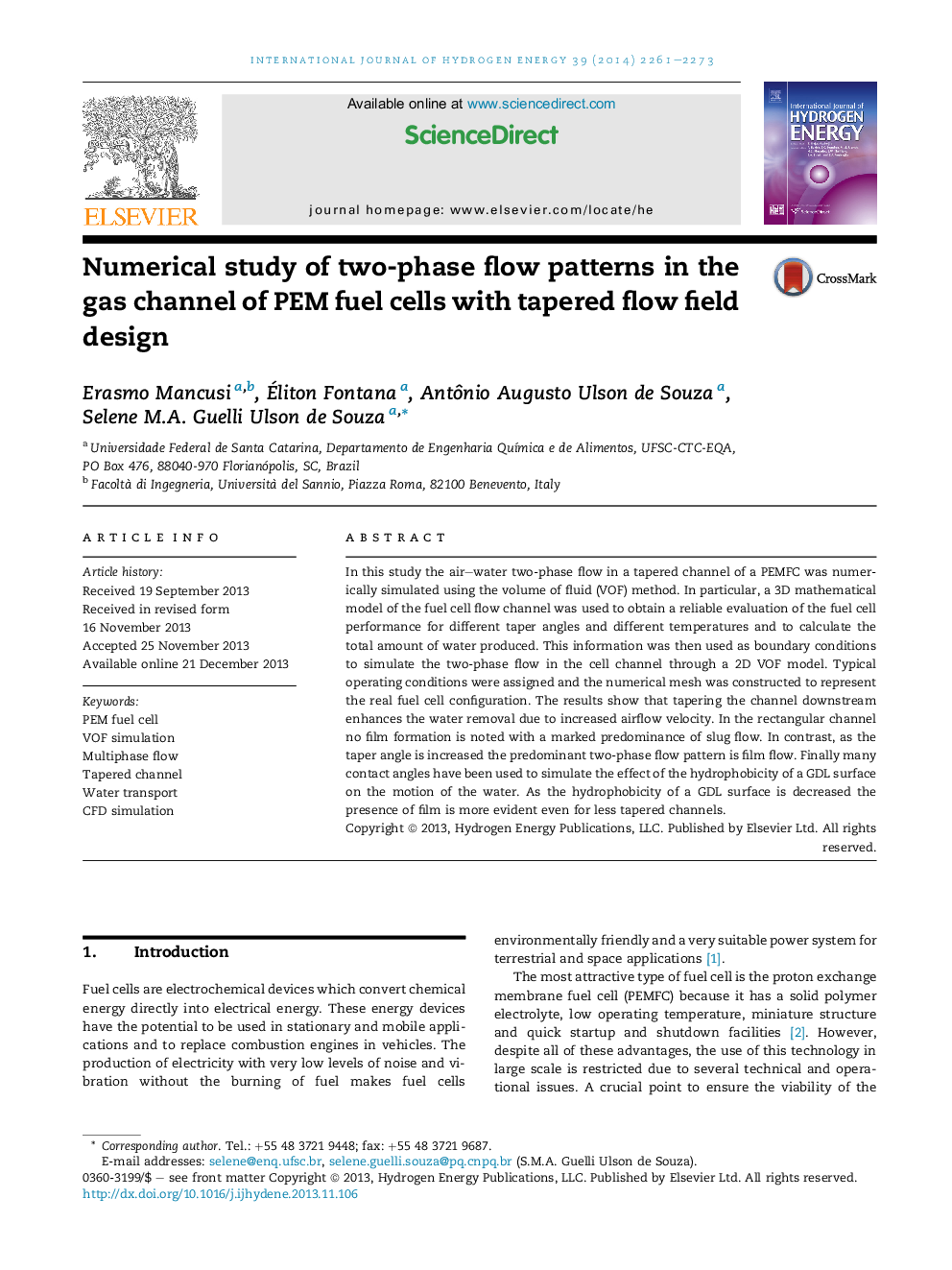| Article ID | Journal | Published Year | Pages | File Type |
|---|---|---|---|---|
| 7720876 | International Journal of Hydrogen Energy | 2014 | 13 Pages |
Abstract
In this study the air-water two-phase flow in a tapered channel of a PEMFC was numerically simulated using the volume of fluid (VOF) method. In particular, a 3D mathematical model of the fuel cell flow channel was used to obtain a reliable evaluation of the fuel cell performance for different taper angles and different temperatures and to calculate the total amount of water produced. This information was then used as boundary conditions to simulate the two-phase flow in the cell channel through a 2D VOF model. Typical operating conditions were assigned and the numerical mesh was constructed to represent the real fuel cell configuration. The results show that tapering the channel downstream enhances the water removal due to increased airflow velocity. In the rectangular channel no film formation is noted with a marked predominance of slug flow. In contrast, as the taper angle is increased the predominant two-phase flow pattern is film flow. Finally many contact angles have been used to simulate the effect of the hydrophobicity of a GDL surface on the motion of the water. As the hydrophobicity of a GDL surface is decreased the presence of film is more evident even for less tapered channels.
Related Topics
Physical Sciences and Engineering
Chemistry
Electrochemistry
Authors
Erasmo Mancusi, Ãliton Fontana, Antônio Augusto Ulson de Souza, Selene M.A. Guelli Ulson de Souza,
